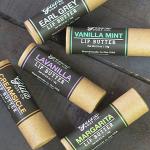Brand Consistency and Cohesive Label Strategy: 4 Tips
This entry was posted on June 23, 2023 .

Whether you sell a few seasonal craft products each year or you have a long repertoire of products on local store shelves, it’s likely time to consider honing in on your branding strategy. While the term may feel daunting, much of this effort boils down to brand consistency.
Why is brand consistency important? In short, it makes you memorable. Brand consistency allows your target customers to recognize you and your products time after time. Learn more about the importance of brand consistency and explore four tips for a successful branding strategy.
Why Is Brand Consistency Important in Product Labels?
In most cases, regardless of whether you mainly sell your products online or in physical stores, your product labels will be the first glimpse that your audience gets of your product and your brand itself. When designed thoughtfully, product labels serve as a visual representation of your brand. The impression that they give will significantly impact the way that customers perceive your products, whether they’ve tried them before or not.
Brand consistency is important in product labels because it helps to build trust and loyalty with customers. They may not remember your brand’s name or the exact specifications of your product, but by implementing brand consistency across your product labels, you can create a cohesive experience for your customers. Ideally, this brand recognition will keep them reaching for your products again and again.
In order to implement a cohesive label strategy, keep these four tips in mind.
1. Know Your Market and Audience
It’s difficult to craft a meaningful message if you don’t know exactly who you’re speaking to. If you’re struggling to come up with a cohesive style for your labels or you find yourself switching between aesthetics, you may not have a clear view of your target audience yet. Slow down and take the time to fully define your market. This process may include steps such as:
- • Conducting market research to pinpoint the interests, purchasing habits, and demographics of your ideal consumers.
- • Analyzing data on your existing customers to better understand trends and patterns.
- • Getting specific about what makes your product unique.
This knowledge can help you drill down on one specific style and branding strategy for your product labels going forward so that your audience can easily find your products in stores.
2. Define Your Main Style
Once you know more about who your ideal consumers are, it’s time to get clear about who you are as a brand. Define your main style by identifying what’s worked in past visuals, what patterns your market research revealed, and what aesthetic best resonates with your intended brand and message.
Defining your style may mean creating word clouds or maps for your brand, or simply compiling the logo, images, colors, fonts and patterns that align with your brand image. Once you’ve clearly defined this style, you can apply it to all product labels to create better brand consistency.
3. Create a Style Guide
Knowing your style is helpful, but as design teams change and grow, it can become cumbersome and complicated to explain each element to every new partner in your design journey. That’s where a style guide comes in. A style guide is a comprehensive document that outlines your brand’s visual guidelines. This will allow for cohesion across product labels and marketing materials, without leaving too much room for guesswork. A style guide will include elements such as:
- • Your logo and when it should be used
- • Your brand’s color palette
- • Preferred fonts and when to use each one
- • Imagery guidelines
Creating a style guide doesn’t mean that every style decision is now set in stone with no wiggle room. Instead, it gives you something steady to reference and work from to create a more recognizable brand.
4. Be Creative and Experiment
While your brand should be recognizable based on your product labels, this doesn’t mean that every product label should look exactly the same. On the contrary, creating brand consistency should open up space for you to create and experiment with your designs as you bring new products onto the market or update existing recipes. You may choose to experiment with the shapes of your labels, or a new brand color, or the introduction of a new character.
Your style guide can serve as the tools in your toolbox, but what you build is up to you! Over time as your consumers come to recognize your products right away, they’ll be excited to see the ways you bend your own rules and bring freshness to your designs.
Incorporating brand consistency into your product labels is an excellent way to build recurring business and create loyalty among your community of customers. By creating high-quality labels that balance brand recognition with fresh visuals, you can level up in your branding strategy. With Lightning Labels, easily create durable and unique labels that communicate your brand and connect you to your ideal customers. Get an instant online quote today.

 Custom Labels
Custom Labels  Custom Beverage Labels
Custom Beverage Labels  Custom Lip Balm Labels
Custom Lip Balm Labels  Custom Warning & Safety Labels
Custom Warning & Safety Labels  Perfume Bottle Labels
Perfume Bottle Labels  Bumper Stickers
Bumper Stickers  Custom Prop 65 Warning Labels
Custom Prop 65 Warning Labels  Custom Stickers
Custom Stickers